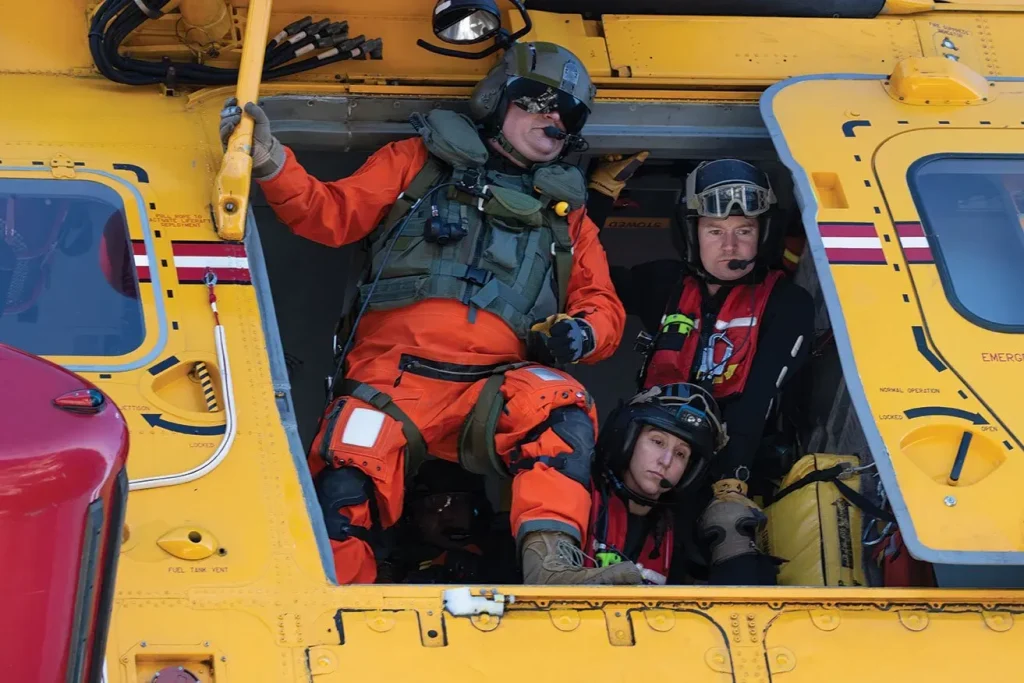Arming the Canadian Coast Guard is a significant topic as the nation moves towards comprehensive reforms in its maritime security strategy. With an evolving security mandate, the government aims to bolster the Coast Guard’s capabilities amid persistent Coast Guard budget challenges. The Liberal government, led by Prime Minister Mark Carney, is committed to enhancing the role of the Canadian Coast Guard as a key player in national defense, which has historically lacked law enforcement authority. This proposed shift not only aligns with broader Canadian Coast Guard reforms but also signals a fundamental commitment to enhancing Canadian security patrols across the country. As discussions progress, the potential arming of the Coast Guard could redefine the agency’s operational capabilities and responsibilities well into the future.
In light of today’s security landscape, discussions around equipping the Canadian maritime agency are gaining momentum. The Liberal administration is considering pivotal changes that would enable the Coast Guard to operate under a more cohesive defense framework, effectively merging its traditional civil service role with intensified security functions. Such a transition involves possible integration of armaments, reflecting contemporary challenges faced by Canadian law enforcement on waterways. These reforms highlight an urgent need to address systemic budgetary constraints while also enhancing surveillance and patrol missions critical for national integrity. With public safety at the forefront, revisiting the operational profile of the Coast Guard could pave the way for a more secure maritime environment.
The Transition to a New Security Mandate for the Canadian Coast Guard
The Canadian Coast Guard (CCG) is poised for a significant overhaul as it transitions to a new security mandate under the leadership of the Minister of National Defence. This change signifies a long-overdue evolution aimed at enhancing the CCG’s role within Canada’s national security framework. Moving the CCG from the Department of Fisheries to National Defence demonstrates a commitment to integrate maritime operations more closely with national security initiatives. The reforms indicate a strategic realignment, placing the Coast Guard in a better position to manage complex security challenges facing Canada.
The shift towards a security-oriented mandate is not merely administrative; it reflects a broader recognition of the evolving threats that Canada must address. By granting the CCG enhanced responsibilities, including maritime surveillance operations and coastal patrolling, the government is signaling its intent to fortify Canada’s borders and ensure maritime safety. This reform aligns with public sentiment regarding national security and the importance of protecting Canadian sovereignty in an increasingly unpredictable global environment.
Frequently Asked Questions
What are the implications of arming the Canadian Coast Guard for its security mandate?
Arming the Canadian Coast Guard would significantly enhance its security mandate, allowing it to conduct maritime security patrols and address potential threats in Canadian waters. This transformation aligns the CCG’s operations with national defense strategies, enabling a more integrated approach to maritime security within Canada.
How will the arming of the Coast Guard impact Canadian security patrols?
The arming of the Canadian Coast Guard is expected to bolster Canadian security patrols by equipping the CCG with the capabilities to better enforce laws and regulations at sea. This reform would enhance the Coast Guard’s role in safeguarding national interests and maintaining sovereignty over Canadian waters.
What challenges might arise from arming the Canadian Coast Guard?
One major challenge in arming the Canadian Coast Guard includes the financial costs associated with procuring weapons and training personnel. Additionally, transitioning from a civilian-focused agency to one equipped for security operations may require comprehensive reforms in operational protocols and fleet management.
How does the Canadian Coast Guard budget affect its arming initiatives?
The ongoing budget challenges faced by the Canadian Coast Guard complicate the initiative to arm the agency. With the CCG operating on a limited budget, securing adequate funding for weaponry, training, and fleet maintenance remains a crucial aspect of the proposal to enhance its security mandate.
What changes are proposed in the reforms for the Canadian Coast Guard?
The proposed reforms for arming the Canadian Coast Guard include transitioning it under the Minister of National Defence, granting it a new security mandate, and increasing funding for its operations. These changes aim to strengthen Canada’s maritime security framework and ensure the CCG can effectively carry out both its civilian and defense responsibilities.
Will the arming of the Canadian Coast Guard affect its current missions?
Yes, arming the Canadian Coast Guard will likely affect its current missions. While it continues to handle tasks such as search and rescue, icebreaking, and marine protection, the inclusion of a security mandate will require balancing these responsibilities with the new focus on enforcement and maritime security operations.
What role will the Minister of National Defence play in the Canadian Coast Guard reforms?
Under the proposed reforms, the Minister of National Defence will oversee the Canadian Coast Guard, integrating it into the national defense framework. This shift is expected to streamline decision-making processes related to security operations, budget allocations, and strategic planning for the Coast Guard’s future.
How do Canadian Coast Guard reforms address the agency’s fleet condition?
Reforms for the Canadian Coast Guard are critical not only for arming the agency but also for addressing the deteriorating condition of its fleet. The proposed enhancements seek to secure funding for new ships and maintenance, ensuring the CCG can operate effectively while fulfilling its enhanced security tasks.
| Key Points | Details |
|---|---|
| Arming Canadian Coast Guard | The Liberal government is contemplating arming the Coast Guard as part of a shift towards more security-focused roles. |
| Transition to National Defense | The Coast Guard will move from the fishery portfolio to report to the Minister of National Defense, enhancing its integration into Canada’s defense budget. |
| Enhanced Security Mandate | The government has proposed a new mandate allowing the Coast Guard to conduct maritime surveillance, security patrols, and collaborate with military and intelligence agencies. |
| Budget and Resources | The Canadian Coast Guard has historically been underfunded; reforms are part of a plan to better resource the agency. |
| Fleet Condition Challenges | The CCG faces issues with an aging fleet that is costly to maintain, with a significant percentage out of service for repairs. |
| Need for Training | Arming the Coast Guard would require significant investment not only in weaponry but also in training and operational preparedness. |
Summary
Arming the Canadian Coast Guard is a significant consideration as the Liberal government redefines its role within the national security framework. This reform aims to better equip the Coast Guard to not only perform its traditional duties but also engage in security operations to protect Canada’s sovereignty. By transitioning oversight from the Minister of Fisheries to the Minister of National Defense, the government seeks to enhance the agency’s operational efficiency and funding. While the notion of arming the Coast Guard remains under discussion, it underscores a broader commitment to modernizing Canada’s maritime security capabilities.



